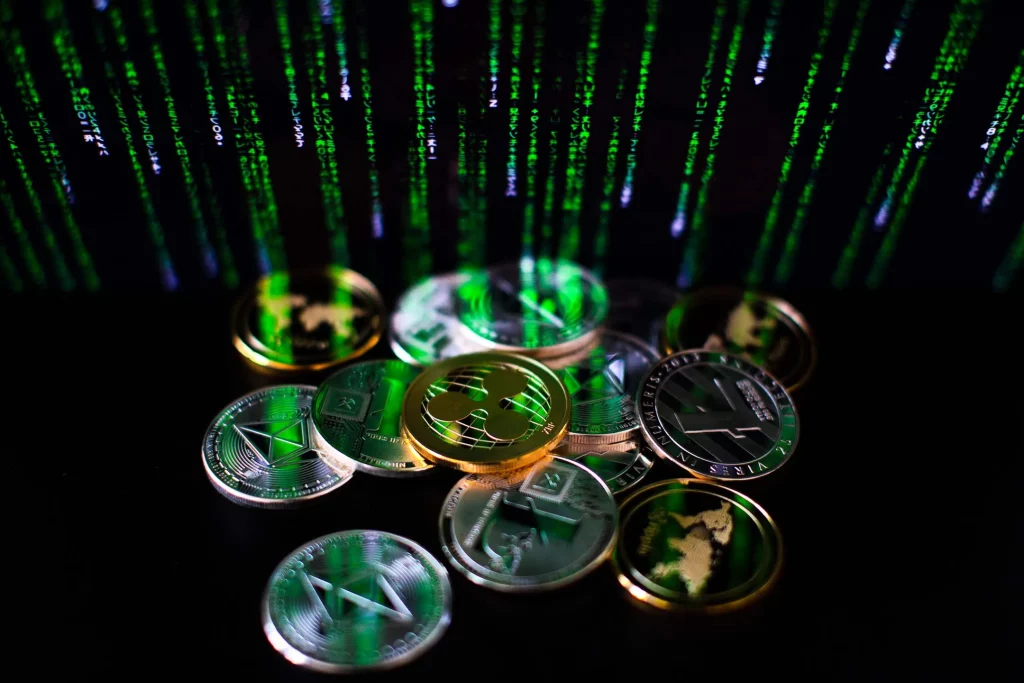Introduction
While blockchain technology initially gained fame as the foundation of cryptocurrencies like Bitcoin and Ethereum, its potential extends far beyond the realm of digital currencies. The underlying principles of blockchain—decentralization, transparency, immutability, and security—offer solutions to a wide range of problems across various industries. As a result, blockchain is increasingly being explored for its ability to transform sectors such as finance, supply chain management, healthcare, real estate, voting systems, and more.
In this article, we will explore the diverse and impactful real-world applications of blockchain technology, demonstrating how its capabilities are being harnessed to address complex challenges, enhance efficiency, and disrupt traditional systems. Whether it’s securing supply chains, digitizing assets, or enabling transparent voting, blockchain is showing its potential to revolutionize industries across the globe.
Section 1: Supply Chain Management
Supply chain management (SCM) involves tracking the movement of goods, raw materials, and products from their point of origin to the end consumer. It is a highly complex system involving multiple parties, each responsible for different aspects of production, distribution, and delivery. The transparency and traceability provided by blockchain can significantly enhance the efficiency, security, and accountability of supply chains.
1.1 Enhancing Transparency and Traceability
One of the most compelling uses of blockchain in supply chain management is its ability to provide real-time tracking of goods as they move through the supply chain. Blockchain enables every participant in the supply chain—manufacturers, suppliers, distributors, retailers, and even consumers—to have access to the same immutable ledger, which records every transaction, shipment, and movement of goods.
- Transparency: Every step of the product’s journey is recorded on the blockchain, providing an auditable, transparent record that can be accessed by authorized participants.
- Traceability: Blockchain can ensure that products are sourced ethically, safely, and legally. For example, consumers can scan a product’s QR code and trace its origin, manufacturing process, and delivery route, ensuring that it meets specific standards (e.g., fair trade, sustainability, or organic certification).
1.2 Combating Fraud and Counterfeiting
Blockchain’s immutability is a key feature in combating fraud and counterfeit goods in supply chains. In industries such as pharmaceuticals, luxury goods, and electronics, counterfeit products are a significant problem. Blockchain helps ensure that the provenance of a product can be verified at each stage, significantly reducing the risk of fraud.
- Pharmaceutical Industry: By recording every step of the supply chain for pharmaceutical products, blockchain can prevent the entry of counterfeit or expired drugs into the market, safeguarding public health.
- Luxury Goods: High-end brands can use blockchain to provide proof of authenticity for luxury items, allowing customers to verify that they are purchasing genuine products.
Section 2: Healthcare
The healthcare industry stands to benefit greatly from blockchain technology due to its potential to streamline data management, improve patient outcomes, and ensure the security and privacy of medical records.
2.1 Securing Medical Records
Blockchain can provide a secure, decentralized system for storing patient medical records. Traditionally, medical data is stored in centralized databases, which are vulnerable to breaches and unauthorized access. With blockchain, sensitive patient information can be securely stored and shared across healthcare providers while maintaining patient privacy and consent.
- Data Ownership: Patients can retain control over their medical records, giving them the ability to grant or revoke access to healthcare providers. This ensures that the patient is the ultimate authority over who views their data.
- Interoperability: Different healthcare providers can access and update a patient’s records in real-time, regardless of the platform they use. This creates a unified, interoperable system that eliminates data silos and improves the continuity of care.
2.2 Drug Traceability and Clinical Trials
Blockchain can enhance the traceability of drugs through the supply chain, ensuring that they have not been tampered with or counterfeited. It can also streamline the clinical trial process, ensuring that data from clinical trials is tamper-proof and easily accessible for analysis.
- Clinical Trial Data: Blockchain can ensure the integrity and transparency of clinical trial data, making it more trustworthy and reducing the risk of data manipulation.
- Drug Distribution: By recording each transaction in the supply chain, blockchain can track the journey of pharmaceuticals from manufacturers to distributors, providing an immutable history that ensures compliance with regulations and reduces the risk of counterfeit drugs entering the market.
Section 3: Real Estate
The real estate industry is another sector that can benefit from blockchain’s efficiency, transparency, and security features. Blockchain can simplify property transactions, reduce fraud, and streamline processes such as title transfers and lease agreements.
3.1 Property Transactions and Smart Contracts
Blockchain can streamline the buying and selling of property by using smart contracts, which are self-executing contracts with terms directly written into lines of code. These contracts automatically execute once predefined conditions are met, eliminating the need for intermediaries like notaries or lawyers.
- Efficiency: By automating administrative tasks like title verification and contract signing, blockchain reduces the time and cost associated with real estate transactions.
- Transparency and Security: Blockchain can provide a transparent and tamper-proof record of property ownership and transaction history, making it easier to verify titles and ensuring that all parties involved in a transaction are trustworthy.
3.2 Tokenization of Real Estate Assets
Blockchain allows for the tokenization of real estate, enabling fractional ownership of properties. This means that instead of purchasing an entire property, investors can buy and sell small portions of the property in the form of tokens.
- Liquidity: Tokenization enables real estate to become a more liquid asset class by allowing property owners to sell or trade shares of their property on blockchain-based exchanges.
- Democratizing Access: Tokenization opens up the real estate market to a broader range of investors, making it possible for people to invest in high-value properties with smaller amounts of capital.
Section 4: Voting Systems
Traditional voting systems are often criticized for being vulnerable to fraud, manipulation, and errors. Blockchain technology can address these issues by providing a secure, transparent, and verifiable voting system.
4.1 Secure Voting
By using blockchain, votes can be recorded securely and immutably, ensuring that they cannot be altered or deleted once cast. This would significantly reduce the risk of election fraud and increase confidence in the voting process.
- Tamper-Proof: Blockchain’s immutability ensures that once a vote is cast, it cannot be changed, providing a transparent and verifiable record of all votes.
- Voter Privacy: Blockchain can provide a system where voters can maintain their anonymity while still ensuring that their votes are counted accurately.
4.2 Increased Voter Participation
Blockchain-based voting systems can make elections more accessible, particularly for people who are unable to vote in person due to distance, disability, or other reasons. Blockchain can facilitate remote voting, allowing individuals to cast secure votes from their mobile devices or computers.

Section 5: Identity Verification
Identity management is an essential function in a digital world where individuals interact with numerous services online. Blockchain can offer a more secure, decentralized, and efficient method for managing identities.
5.1 Self-Sovereign Identity (SSI)
Self-sovereign identity (SSI) allows individuals to control their identity without relying on centralized authorities (e.g., governments or corporations). By using blockchain, users can store their identity credentials on a decentralized ledger and selectively share them with trusted parties.
- Control and Privacy: Individuals have full control over their identity data and can choose which information to share with whom, maintaining privacy and security.
- Reducing Identity Fraud: Blockchain-based identity systems are resistant to tampering, making them less vulnerable to fraud or identity theft.
5.2 Digital ID Verification
Blockchain can streamline the process of digital identity verification for online services, such as financial institutions, government agencies, and healthcare providers. Instead of relying on passwords or traditional ID cards, users can authenticate themselves securely through a blockchain-based identity system.
- KYC/AML Compliance: Blockchain can improve Know Your Customer (KYC) and Anti-Money Laundering (AML) processes by providing a secure, immutable record of customer identities that can be easily verified by authorized parties.
Section 6: Intellectual Property and Copyright Protection
Blockchain can be a powerful tool for protecting intellectual property (IP) and copyrights, ensuring that creators are compensated fairly and that their work is not misused or stolen.
6.1 Digital Rights Management
Blockchain can be used to create a decentralized system for managing and protecting digital content, such as music, videos, and art. By registering content on the blockchain, creators can prove ownership and control how their work is used and distributed.
- Smart Contracts: Blockchain can automate royalty payments through smart contracts, ensuring that creators receive fair compensation whenever their work is used.
- Anti-Counterfeiting: By registering the provenance of digital and physical assets on the blockchain, creators can protect their work from unauthorized duplication or misuse.
Conclusion
Blockchain technology has evolved far beyond its origins in cryptocurrency. Today, it holds the potential to revolutionize a wide array of industries by offering solutions to complex problems like fraud, inefficiency, and lack of transparency. From supply chain management to healthcare, real estate, voting, identity verification, and intellectual property protection, blockchain’s ability to provide security, transparency, and decentralization is transforming industries and paving the way for more efficient and equitable systems.
As blockchain technology continues to mature, its applications will only grow more widespread, offering innovative solutions to long-standing challenges and creating new opportunities for individuals, businesses, and governments alike.
















































